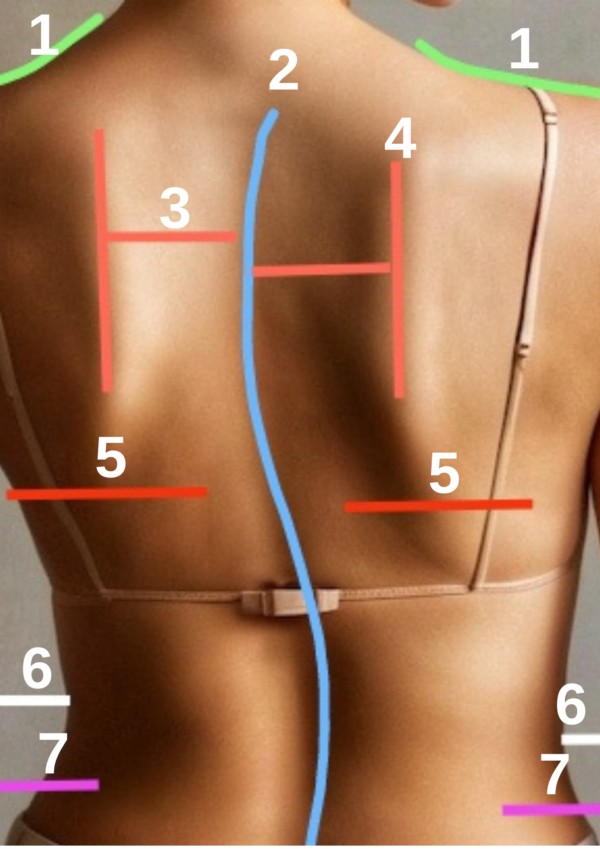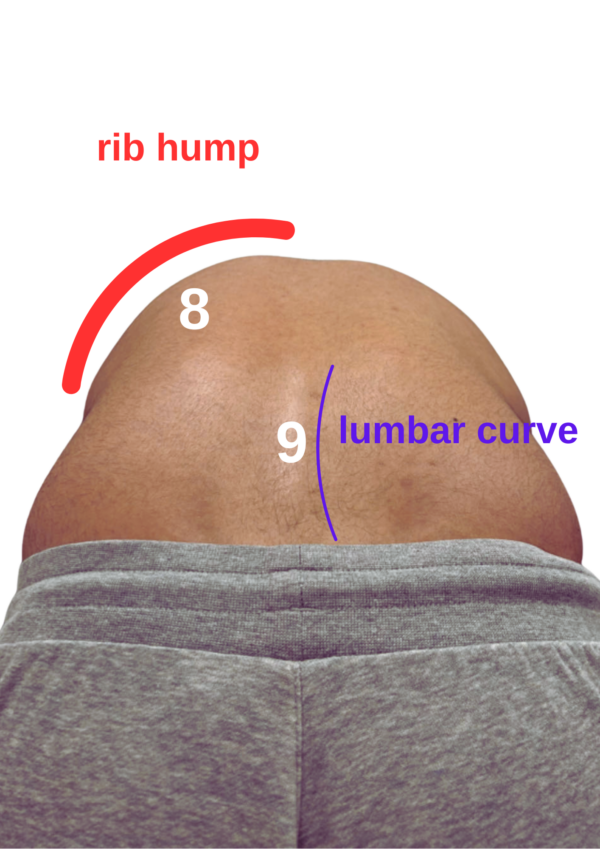Self Assessment
The following is a guide on how parents can check if their child may have scoliosis. There are two body positions: standing and forward bending, each with relevant landmarks (labelled with numbers) to check.
Standing position
1. Shoulder level: Observe the levels and symmetry of shoulders. Is one shoulder significantly higher or more forward than the other?
2. Spinal curve: Is the spine in the midline or is there any obvious curvature of the spine?
3. Distance between the shoulder blades to midline: Are the distances between the inner edge of the shoulder blades and the midline equal on both sides?
4. Shoulder blade positions: Do either shoulder blades look protruded? Instruct your child to reach forward with their arms. Is one shoulder blade more prominent than the other?
5. Inferior angle of shoulder blades: Are the positions of the inferior angle of shoulder blades approximately equal?
6. Waist-elbow distance: Are the distance between the waist and elbows equal on both sides?
7. Hip level: Are the upper edges of hips about the same levels on both sides?
Forward bending position
8. Adam’s forward bend test: Have the child stand with feet together, bend forward at the waist, and let the arms hang freely. If there is an obvious rib hump or curve in the back, it is suggestive of scoliosis.
9. Back muscle prominence: While your child is in a forward bending position, run your hands down on either side of the spine along their spine from the ribs towards the hips. If there is an obvious difference in muscle mass, it is suggestive of scoliosis and requires further evaluation.

